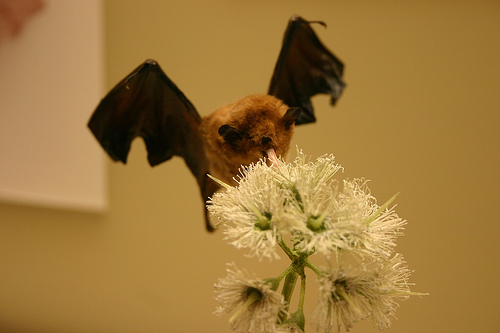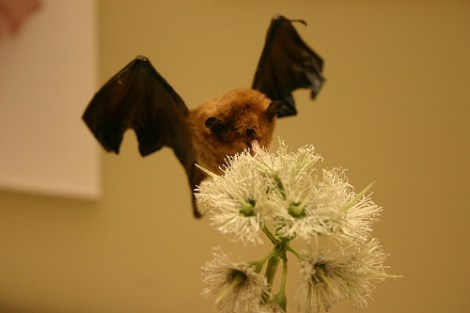The name of this bat is, appropriately, Pallas’s long-tongued bat. These tiny flying creatures are only two inches long, but they have incredibly long, notably hairy tongues. And those tongues work like “nectar mops,” scientists studying the bats told NPR.
Brainerd says it turns out that each hair has blood vessels supplying it. When the bat sticks its tongue out to feed, the muscles of the tongue contract, pushing blood into the hair and making it stand on end. “The mechanism is like an active mop that’s opening up to make more space for this liquid nectar to be collected,” she says.”
It’s awesomely gross. Here, you can watch the bat unfurl its long, hairy tongue in slow motion, starting around 0:28
[protected-iframe id=”a29ee312bdd99440efc1cd153da7435a-5104299-30178935″ info=”http://www.npr.org/templates/event/embeddedVideo.php?storyId=181634051&mediaId=181636179″ width=”470″ height=”300″ frameborder=”0″ scrolling=”no”]
You can’t see it, but what’s happening is this:
“And then very close to when the tongue is maximally extended, these hairs become erect,” Harper says. “And when that happens, a space is created between each of the rows of hairs on the tongue tip. And nectar is loaded onto each one of those spaces.
This is what the tongue looks like close-up. It’s so gross, yet so awesome. Countdown until someone figures out how to make actual mops that work on the same principle. Which you will hopefully not have to operate with your mouth.




